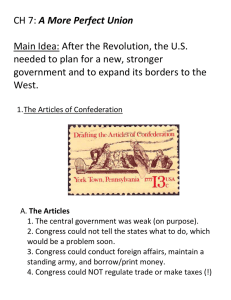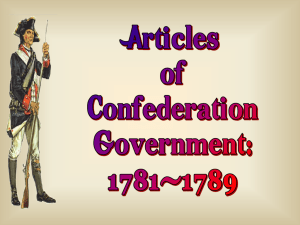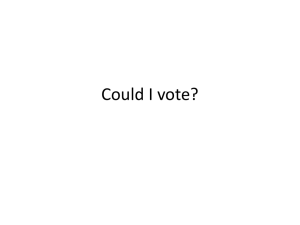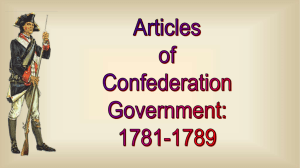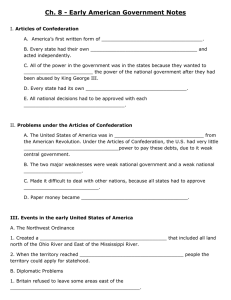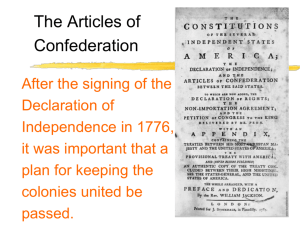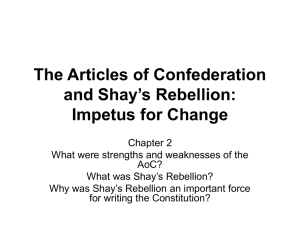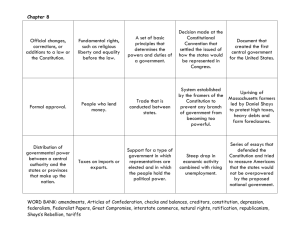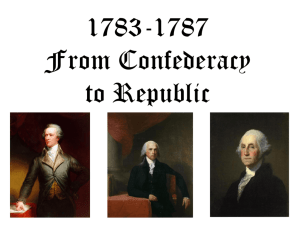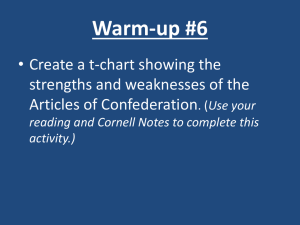First US Government: Articles of Confederation & Shays' Rebellion
advertisement
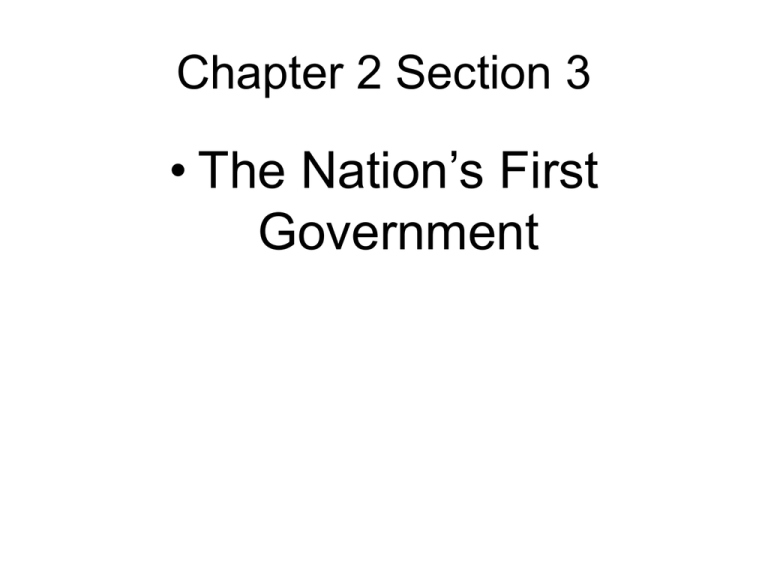
Chapter 2 Section 3 • The Nation’s First Government Early State Constitutions • In January 1776 New Hampshire became the first colony to organize as a state and craft a detailed written plan for government (a constitution) • Soon all colonies followed suite • Each state had a legislature to create laws • Most were bicameral • Each had a – governor elected by the legislature or by the citizens – Had Judges – Most had a bill of rights The Massachusetts Constitution • Massachusetts was the last to draw up a Constitution – It distributed power evenly among branches – Governors and courts had authority to check the legislature – It was approved by a vote of the states citizens The Articles of Confederation • The First constitution of the United states of America • Set up a one house legislature in which each state had one vote • Gave congress control over the army and authority to deal with foreign countries on behalf of the states • Did not grant congress two important powers – No power to enforce its laws – No power to tax Weaknesses of the Articles of Confederation • Could not pass a law unless 9 states voted in favor of it • Amendments required a unanimous vote of all 13 states • Did not provide for a governor or for courts • If a state decided to ignore a law the congress could do nothing about it A shaky National Government • A peace agreement with great Britain called the treaty of Paris was signed in 1783 • The country was in serious financial troubles • State governments were also in financial trouble so they tax their citizens very heavily Shays’s Rebellion • Daniel shays, a farmer who like many Americans had fallen into debt because of heavy state taxes, led one of the most alarming disturbances • He lead 1,200 farmers on a raid of a federal arsenal. • Shays’s rebellion was quickly stoped it sent a wake up call through the country • Lead many people to call for a stronger central government

